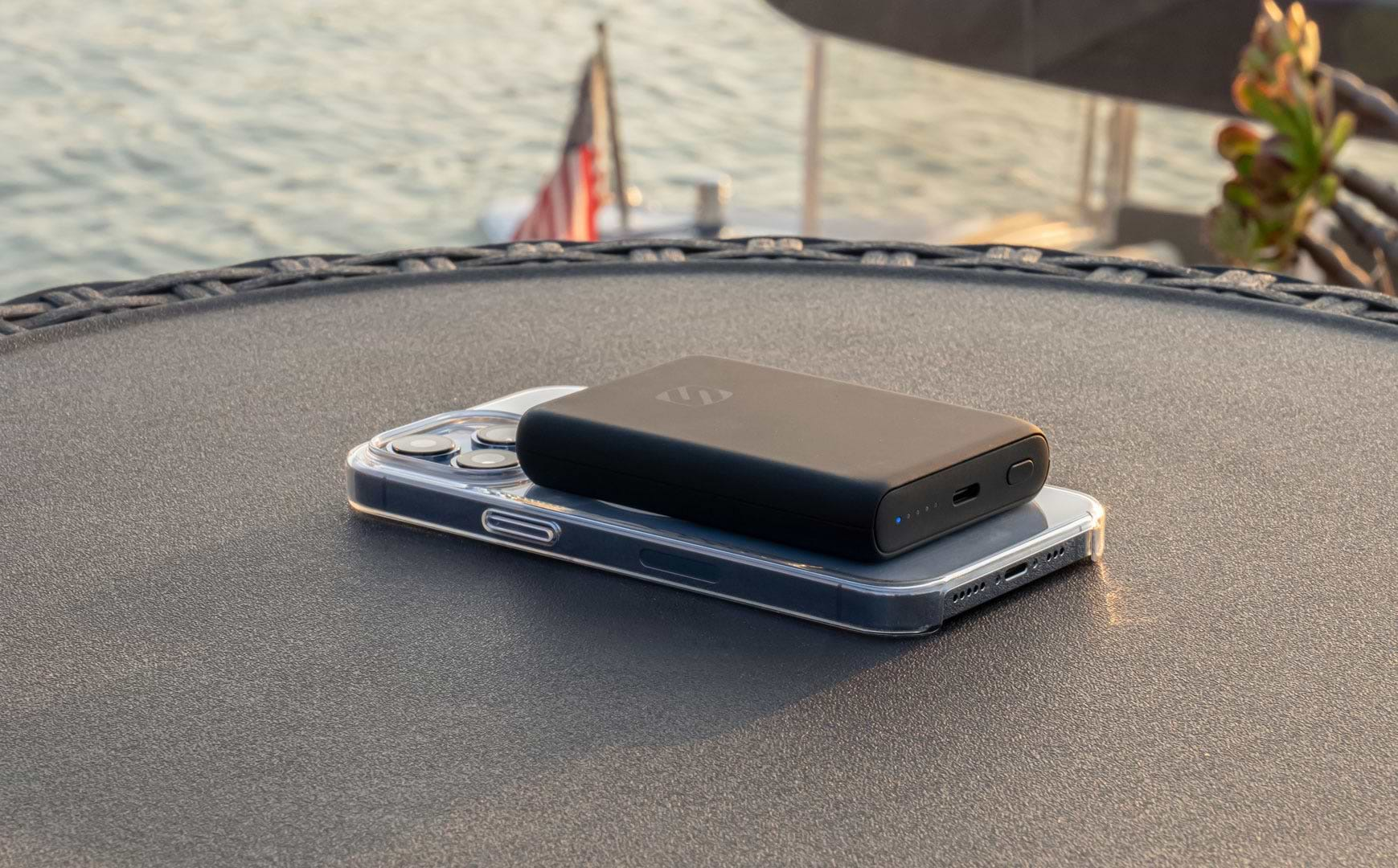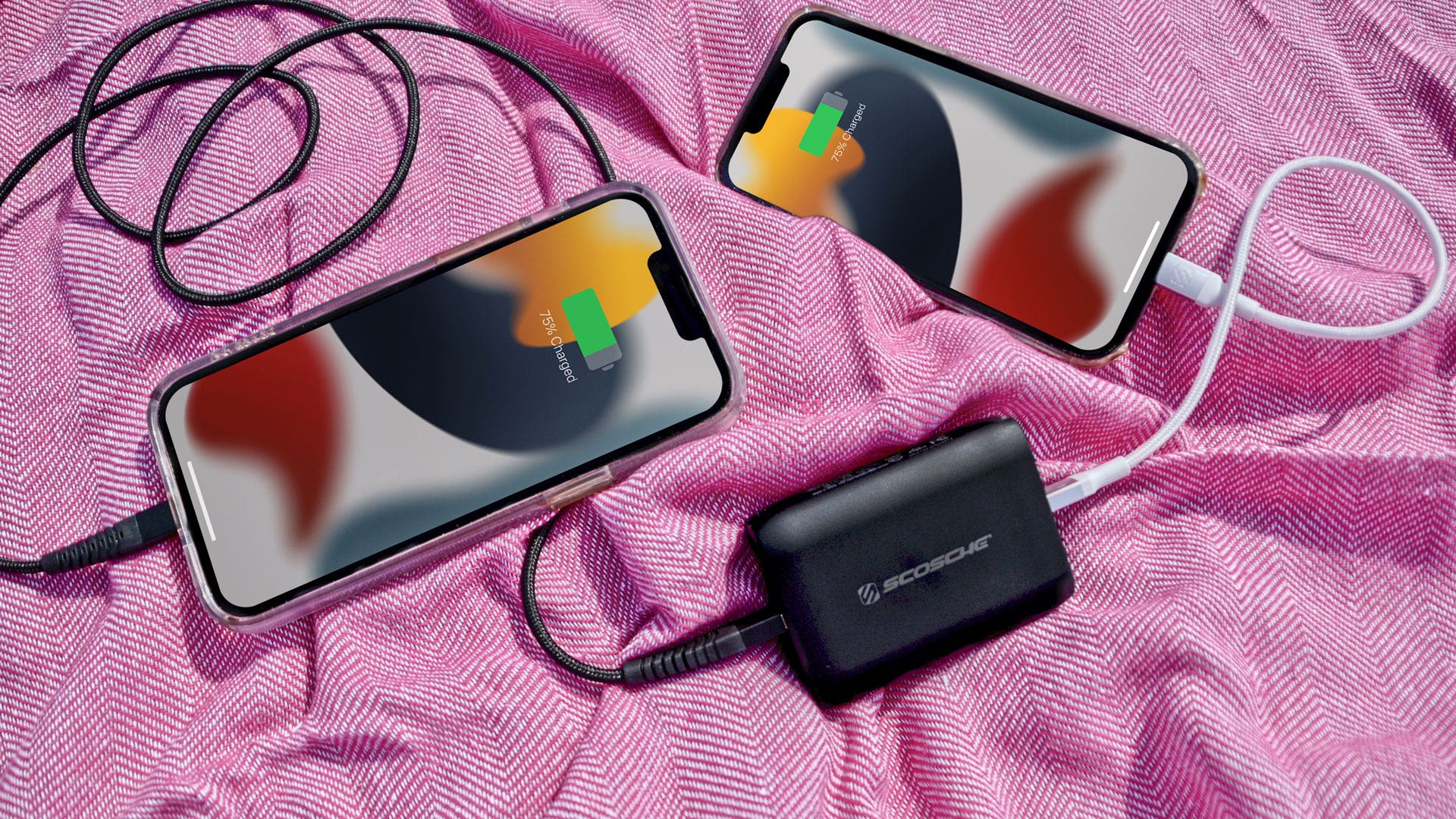Understanding Power Banks: Portable Charging Solutions

In today's fast-paced, digitally-driven world, staying connected is more important than ever. Whether it's for work or play, the need for a reliable power source has become a necessity. This is where power banks come into the picture. These portable charging solutions have revolutionized the way we stay powered on the go, providing a much-needed backup for our devices.
In this article, we will explore the basics of power banks, the different types available, key features to consider when buying one, safety tips for usage, and what the future holds for portable charging solutions.
The Basics of Power Banks
Power banks, also known as portable chargers or external batteries, are compact and lightweight devices that store electrical energy. They are designed to charge electronic devices such as smartphones, tablets, cameras, and even laptops when an outlet is not available. By utilizing a power bank, users can conveniently charge their devices anytime, anywhere.
What Is a Power Bank?
A power bank is essentially a portable battery pack that consists of one or more rechargeable lithium-ion cells. It also features built-in circuitry to control the flow of electricity and protect the devices being charged from overcharging and short circuits. Power banks come in a variety of shapes and sizes, with their power capacity measured in milliampere-hours (mAh) or watt-hours (Wh).
Power banks have become an indispensable accessory for modern-day life. With the increasing reliance on electronic devices, having a reliable power source on the go has become a necessity. Whether you're traveling, attending a conference, or simply spending a day out exploring, a power bank ensures that you never run out of battery power.
These portable chargers are designed with convenience in mind. They are compact and lightweight, making them easy to carry in a bag or pocket. Some power banks even come with built-in cables, eliminating the need to carry extra cords. With their sleek and stylish designs, power banks have become a fashion statement as well.
How Do Power Banks Work?
When a power bank is connected to an electronic device via a USB cable, it acts as an intermediary power source. The power bank stores electrical energy from an external power source, such as a wall outlet or solar panel, and transfers it to the connected device. The capacity of the power bank determines the number of times it can charge a device fully. For example, a 10,000mAh power bank can charge a smartphone with a 3,000mAh battery approximately three times before needing to be recharged itself.
Power banks have advanced features that enhance their functionality. Some power banks come with multiple USB ports, allowing users to charge multiple devices simultaneously. This is especially useful when traveling with friends or family. Additionally, some power banks have fast charging capabilities, enabling devices to charge at a much faster rate than traditional chargers.
Power banks have also evolved to incorporate wireless charging technology. With wireless power banks, users can simply place their compatible devices on top of the power bank to initiate charging, eliminating the need for cables altogether. This innovation has made charging even more convenient and hassle-free.
Furthermore, power banks have become more environmentally friendly with the introduction of solar-powered options. These power banks have built-in solar panels that harness the power of the sun to charge the internal battery. This renewable energy source is not only sustainable but also allows users to charge their devices even in remote areas without access to electricity.
In conclusion, power banks have revolutionized the way we charge our electronic devices. They provide a portable and reliable power source, ensuring that we never have to worry about running out of battery power. With their advanced features and innovative designs, power banks have become an essential accessory for tech-savvy individuals on the go.


Types of Power Banks
Power banks come in various types, each catering to different charging needs and preferences. Let's take a closer look at some of the most popular types:
Solar Power Banks
Solar power banks are equipped with solar panels that harness sunlight and convert it into electrical energy. They are an eco-friendly option, especially for outdoor enthusiasts and travelers who find themselves away from traditional power sources.
Imagine going on a camping trip in the middle of nowhere. You're surrounded by breathtaking nature, but your phone's battery is running low. With a solar power bank, you can simply place it under the sun and let it soak up the rays. The solar panels will convert the sunlight into energy, giving you a sustainable and reliable charging solution. It's like having a mini solar power station in your backpack!
While solar power banks can be slower to charge compared to their counterparts, they offer a sustainable and reliable charging solution when sunlight is available. So, even if you're in a remote location, you can still stay connected and capture amazing memories without worrying about running out of battery.
Wireless Power Banks
Wireless power banks utilize wireless charging technology to replenish the battery of wireless charging-enabled devices. By simply placing the device on top of the power bank, it can start charging without the need for any cables.
Imagine sitting in a cozy coffee shop, enjoying your favorite beverage, and suddenly realizing that your phone is about to die. With a wireless power bank, you can simply place your phone on top of it, and voila! Your phone starts charging without the hassle of tangled cords. It's like magic!
Wireless power banks offer convenience and eliminate the hassle of dealing with cables. They are perfect for those who prioritize a cable-free charging experience. Whether you're at home, in the office, or on the go, you can easily charge your device without the need to search for a charging cable.
High Capacity Power Banks
High capacity power banks are designed for users with power-hungry devices or those who need to charge multiple devices simultaneously. These power banks often have a larger mAh capacity, allowing for multiple charges before needing to be recharged themselves.
Imagine being on a long-haul flight, with your tablet, smartphone, and smartwatch all in need of a recharge. A high capacity power bank comes to the rescue! With its larger mAh capacity, you can charge multiple devices multiple times before the power bank itself needs to be recharged.
High capacity power banks are particularly useful for travelers or individuals who frequently find themselves away from power sources for extended periods. Whether you're on a business trip, a road trip, or simply exploring a new city, you can rely on a high capacity power bank to keep all your devices powered up and ready for action.
Key Features to Consider When Buying a Power Bank
When purchasing a power bank, it's important to consider the following key features to ensure you choose the right one to meet your charging needs:
Battery Capacity
The battery capacity of a power bank, measured in milliampere-hours (mAh) or watt-hours (Wh), determines how much charge it can hold. Consider the capacity of your device's battery and choose a power bank with a higher capacity to ensure multiple charges.
For example, if you have a smartphone with a 3000mAh battery and you want a power bank that can fully charge it twice, you would need a power bank with a capacity of at least 6000mAh. However, keep in mind that the actual charging capacity may be slightly lower due to energy loss during the charging process.
Additionally, if you plan on charging larger devices like tablets or laptops, you will need a power bank with an even higher capacity to provide sufficient power.
Number of Ports
The number of ports on a power bank indicates how many devices can be charged simultaneously. If you frequently use multiple devices or travel with others, opt for a power bank with multiple ports to prevent any waiting time.
Having multiple ports allows you to charge your smartphone, tablet, and Bluetooth earphones all at once, without the need for a separate charger or waiting for one device to finish charging before connecting another.
Some power banks even come with different types of ports, such as USB-A, USB-C, and micro USB, providing compatibility with a wide range of devices.
Size and Weight
The size and weight of a power bank determine its portability. Choose a power bank that is small and lightweight enough to easily fit in your bag or pocket, while still providing the desired power capacity.
For frequent travelers or those who are always on the go, a compact and lightweight power bank is essential. You don't want to be weighed down by a bulky and heavy power bank while exploring new places or attending meetings.
Fortunately, there are many power banks available in the market that offer high power capacity in a slim and lightweight design. Some even come with sleek and stylish finishes, making them a fashionable accessory to carry around.
Remember to also consider the shape and form factor of the power bank. Some power banks are designed to be slim and rectangular, while others may have a cylindrical shape. Choose a design that suits your personal preference and easily fits into your lifestyle.
Safety Tips for Using Power Banks
While power banks are generally safe to use, it's essential to follow a few safety tips to ensure optimal performance and prevent any potential risks:
Avoid Overcharging
Do not leave your devices connected to a power bank for an extended period once they are fully charged. Overcharging can degrade the battery life of both the power bank and the device being charged. Always disconnect the devices once they are fully charged to prolong their lifespan.
Proper Storage and Maintenance
Store your power bank in a cool and dry place, away from direct sunlight and extreme temperatures. Avoid exposing it to moisture or water, as this can damage the internal components. Regularly check the power bank and its cables for any signs of wear and tear, and replace them if necessary.
The Future of Portable Charging Solutions
With the ever-evolving technological landscape, we can expect exciting advancements in the field of portable charging solutions. Power banks will continue to be refined, offering even greater power capacities and faster charging speeds. The integration of renewable energy sources, such as solar power, will become more prevalent, making power banks even more eco-friendly and sustainable.
Technological Advancements in Power Banks
Advancements in power bank technology will focus on improving efficiency and addressing current limitations. We can expect to see power banks with higher energy densities, allowing for smaller and more compact designs without sacrificing capacity. As wireless charging becomes more widespread, we may also see power banks equipped with improved wireless charging capabilities.
Environmental Impact and Sustainability of Power Banks
In an era where environmental consciousness is on the rise, power banks are also expected to become more sustainable. Manufacturers will likely prioritize the use of recyclable materials and implement energy-efficient charging technologies. Additionally, advancements in solar power banks will enable more people to harness the sun's energy for their charging needs, reducing reliance on traditional power sources.
Conclusion
Power banks have become indispensable companions in our increasingly mobile lives. These portable charging solutions offer convenient and reliable backup power for our devices. Understanding the basics of power banks, exploring the different types available, considering key features when purchasing, and following safety guidelines will ensure that you find the perfect power bank to suit your needs. As technology continues to evolve, power banks will play an even more significant role in our lives, providing sustainable and efficient charging solutions for a connected future.